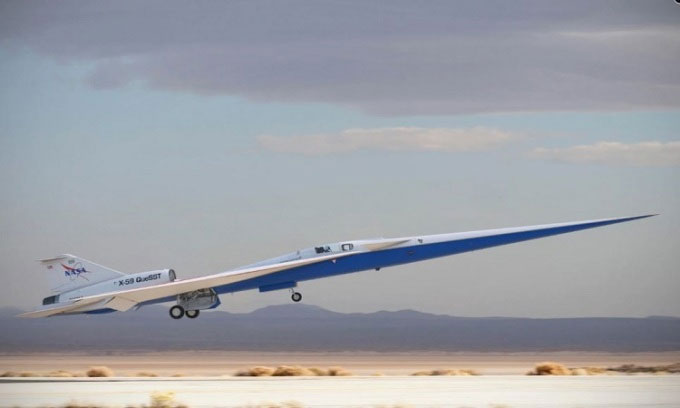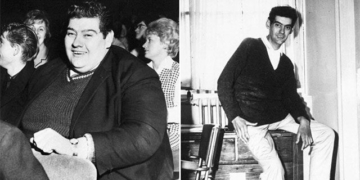NASA is getting closer to making the dream of silent supersonic flight a reality with the upcoming test of the X-59 aircraft, capable of reaching speeds of 1,500 km/h.
At the Armstrong Flight Research Center in the outskirts of Lancaster, California, NASA is developing the X-59 QueSST (Quiet Supersonic Technology), a test aircraft designed to fly faster than the speed of sound while producing only a faint noise, as reported by Cnet on December 6. Traditional supersonic aircraft can generate noise levels exceeding 100 decibels during flight, which led the Federal Aviation Administration (FAA) to prohibit commercial supersonic flights over land in 1973. However, the X-59 is engineered to minimize the shock waves that cause sonic booms during flight, reducing the noise level on the ground to 75 decibels—comparable to the sound of a car door slamming on the street.

The X-59 supersonic aircraft promises to minimize noise. (Photo: NASA)
To design a low-noise aircraft, NASA and Lockheed Martin returned to the fundamentals of aerodynamics. The result is an aircraft model that is both advanced and simple. Inside a windowless hangar in the California desert, workers are assembling the X-59 and preparing for its first flight test. Upon closer inspection, the pointed design of the aircraft resembles something from a 1950s science fiction story, featuring smooth curves and a centrally located cockpit.
Designed and built by NASA and Lockheed Martin, the X-59 is described as the supersonic aircraft of the future. The project’s goal is to persuade lawmakers, such as the FAA, to lift the ban on passenger-carrying supersonic flights over land. This change could pave the way for supersonic travel, making it feasible to fly faster than the speed of sound for the first time since the Concorde was retired in 2003.
As the aircraft flies through the air, it pushes air in front of it, creating compression waves. However, when flying at supersonic speeds (above Mach 1 or 1,235 km/h), the aircraft moves faster than the compression waves. This results in shock waves that reach the ground as a sonic boom. Any large protruding parts on the aircraft, such as the cockpit at the front, can generate shock waves. To minimize the shock waves transmitted to the ground, designers need to alter the shape of the aircraft, making it more elongated and streamlined, with bumps distributed along its longer body.
This is exactly what NASA and Lockheed Martin have accomplished with the X-59. The aircraft measures 30.4 meters in length and can only carry one passenger. With a nose that is over 9 meters long, it makes up about one-third of the aircraft’s length and connects to the delta wings and engines at the rear. According to Larry Cliatt, the lead engineer for NASA’s X-59 sound testing project, all these features help ensure that shock waves generated in midair will separate and not combine to create a loud sonic boom.
The X-59 is so long and streamlined that the cockpit does not have a front window. Instead, the pilot uses the External Vision System (XVS) developed by NASA to fly the aircraft. The XVS employs two cameras positioned above and below the aircraft to provide real-time images of the front view on an HD screen. Additionally, the XVS functions like a heads-up display (HUD), projecting data on altitude, airspeed, and flight path.
At Armstrong, NASA has tested the XVS in the X-59 flight simulator. The XVS allows pilots to see flashing alerts or colored text at the bottom of the screen, information they cannot see through a conventional cockpit window.
Throughout 2022, NASA and Lockheed Martin will conduct initial tests with the X-59, but the real testing will take place during its first flight in 2023, in the “sound validation” phase. NASA will launch the X-59 to ensure that the sonic boom is minimized. The X-59 will fly alongside an F-15 fighter jet to measure the shock waves generated during the flight.
During the sound validation phase, NASA will install a series of microphones along a 48-kilometer route in the Mojave Desert in California to measure noise levels and ensure that the aircraft operates as quietly as expected. Following this will be a third testing phase in 2025, when the aircraft will fly over several cities and towns in the U.S. to gauge community reactions. Subsequently, NASA will submit data to lawmakers to amend restrictions on supersonic flight. If successful, the X-59 could pave the way for companies and private airlines to introduce supersonic travel for everyday passengers worldwide.


















































